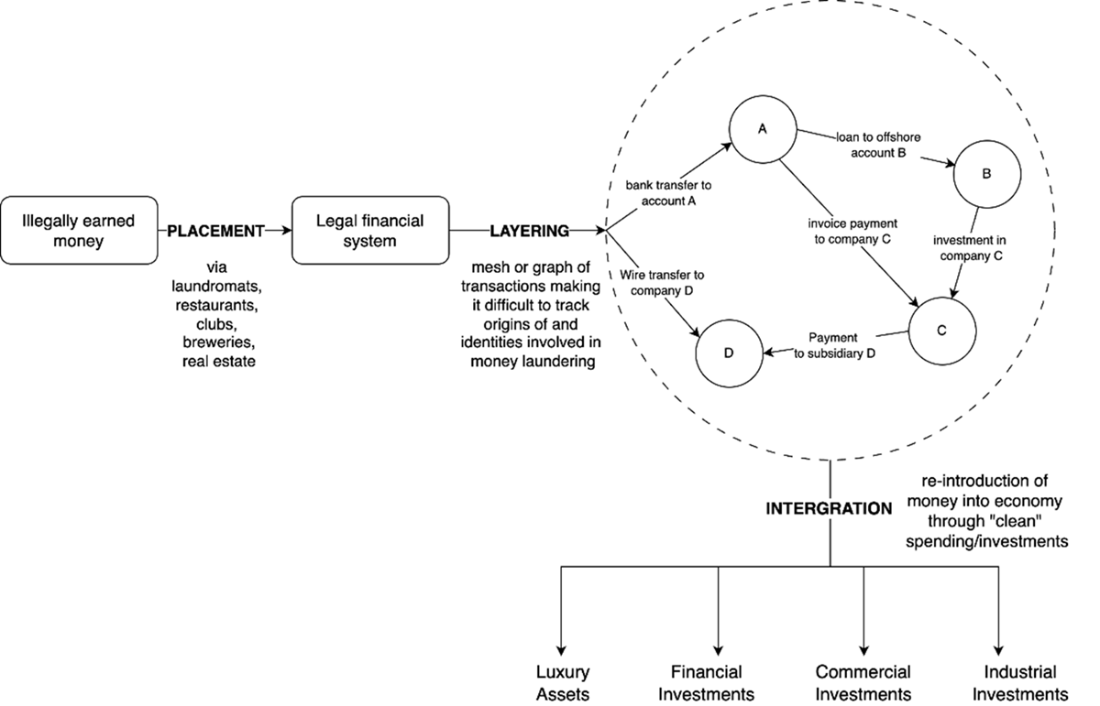chapter nine
9 Anti-money laundering for Bitcoin transactions using graph attention network
This chapter covers
- Understanding money laundering in Bitcoin transactions
- Exploring the Elliptic Bitcoin graph dataset
- Catching illicit Bitcoin transactions using traditional deep learning
- Using Graph Convolutional Network (GCN) to detect illicit transactions
- Improving performance using Graph Attention Network (GAT)
Money laundering is the act of hiding or whitewashing money gained from crimes by moving it through legal businesses or accounts to make it look clean. Why the term “laundering”, though? Al Capone, the infamous American gangster in the 1920s, is said to have coined the term, as he used to invest in laundromats to whitewash the cash he earned illegally. Restaurants, clubs, breweries, or even real estate are some other businesses used historically as black money cleansers. As shown in figure 9.1, money laundering is conducted in three steps – placement, layering, and integration.
Figure 9.1 Money laundering cycle, where illegally earned money is placed into the legal financial system via particular businesses such as laundromats, clubs, real estate, and so on. This money is then layered through a complex mesh of transactions into different financial entities, making it difficult to trace origins and identities associated with the laundered money. This money is then integrated into mainstream economy via clean investments into luxury assets, and different industrial and commercial entities.
